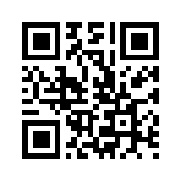The First Dog Show
(Reference: The Canine Chronical by Amy Fernandez)
Why Go To A Dog Show?
Anyone acquainted with our sport knows that the first dog show happened in 1859. However, like most conventionally accepted historical facts, the truth is kinda, sorta different.
“The Sporting Dog Show” staged at the Town Hall, Newcastle-on-Tyne on June 28 and 29, 1859 was actually an afterthought tacked on to a wildly successful poultry show. A few decades later, historian Edward Ash profiled this momentous event for his satirical overview Dog Shows and Doggy People. “They do not appear to have been unduly venturesome, as the breeds were restricted to Pointers and Setters.” That wasn’t the only exclusive aspect of it. The Pointer arbiters coincidentally came out on top in the Setter ring. Likewise, the Setter judges grabbed the top awards in Pointers.
Despite that apparent conflict of interest, 60 contenders vied for very enticing prizes, a pair of custom made double-barreled shotguns, manufactured and donated by celebrated Newcastle gunsmith, Mr. W.R. Pape, one of the show’s principal promoters. Both he and his fellow committee member, Mr. J. Shorthose, later claimed credit for hatching the plan. Pape was described as a successful breeder, exhibitor and judge of Pointers and Setters, which qualified as a truly remarkable accomplishment considering that this was the first show!
Equally convincing anecdotal evidence credits Dr. J.H. Walsh (Stonehenge) and/or General Hutchinson, author of the 1847 bestseller, Dog Breaking, and another gunsmith, Mr. Josh Lang.
We’ll never know for sure, but we do know that years of letter writing, editorializing, and furious debate preceded the actualization of that legendary show. Pardon the pun, but no one was jumping the gun on this one as Britain’s beloved Tailwagger Magazine confirmed in 1930. “There had been two or three previous attempts to hold a show for dogs, but support had not been forthcoming, and the idea had
been given up as impracticable. Many people pointed out the utter absurdity of expecting people to pay to see dogs – when they saw as many or more than they wanted, in the streets!”
Still, when it finally happened it was a blockbuster. Regardless of who originated the idea, these Gundog fanciers were on a roll, quickly organizing an expanded show later that year that also featured Retrievers, Clumbers and Cockers. And as they say, the rest is history.
But while all that was in the works, across town another doggy set was well into the second decade of their version of dog shows. The most successful of these ventures was the Toy Dog Club, England’s second official dog club, pioneered by Charles Aistrop, former proprietor of the Westminster Pit in Duck Lane. He launched his Fancy Dog Show in 1852, and despite the sixpence gate fee and socially questionable venue, a Denmark Street tavern, it was a hit from the get-go. Crowds lined up to glimpse the finest examples of exotic breeds like Blenheim Spaniels, Italian Greyhounds, Chinese Pugs, Skye Terriers, Bulldogs, and tiny Black and Tan Terriers.
In April 1990 The Kennel Gazette confirmed the longstanding history of this working class English hobby, “Formerly, interest in toy and exotic breeds had been confined to the aristocracy, but now they were to be found in even the most humble homes. As the popularity of these breeds spread it was inevitable that their owners should gather together to share their enthusiasm and extend their knowledge. One such meeting was advertised in the February 1834 issue of the Sporting Magazine.”
Along with daily coverage of coursing, racing, and prizefighting, sports rags like Bell’s Life regularly advertised a calendar of pub shows. By 1867, they were incredibly popular as James Greenwood acknowledged in his colorfully gritty chronicles of Victorian London Unsentimental Journeys; or Byways of the Modern Babylon. “At least fifty different slums and corners, and crooked ways of the great City, establishments are devoted to the ‘showing’ of dogs. The columns of Bell’s Life revealed more than a dozen invitations of the sort …the following is a fair sample: A Treat for the Fancy! – On Sunday eveningnext a Show will be held at Mr. Lerinke’s, ‘Duck,’ Bethnal Green-chair taken at eight o’clock.”
Greenwood arrived to find over 50 dogs meticulously groomed for display by their owners. “One could not help reflecting, after gazing first on the dog, then on its keeper, what a pity it was that the former should be tied to such a low-bred companion! How did these beautiful little creatures come into the hands of their present owners, is a question little less difficult to answer than another. Of what use are they to their masters?”
Within a few years, no one would question the motivation to cultivate a breed for purely aesthetic satisfaction. But long before shows went mainstream these quirky little events set the precedent for that concept.
Decades later, Britain’s Gundog clique battled for recognition of that honor. Although that historical detail remains open to debate, it’s fair to say that their milestone 1859 show possessed the social cachet to earn mainstream credibility for the sport.
In less than a year, shows proliferated throughout Britain and gained traction in America.
What Happens at a Dog Show
At an All Breed Conformation dog show, the first thing that happens is the breeds are judged against their own kind to find the best single dog of one given breed. For example, all Golden Retrievers would compete against each other. This competition is done in a breed ring. After a dog wins its breed, it goes on to the group ring and competes against the other dogs in that specific group. The different groups are:
Working, Herding, Non-Sporting, Terrier, Toy, Hound and Sporting. So the Golden Retriever would be shown in the Sporting Group and an American Staffordshire Terrier would be shown in the Terrier Group. After a dog wins the First Place Blue Ribbon in their group ring, they go on to the Best in Show ring and are shown against all of the other group winners that were chosen that day.
There are two other kinds of conformation dog shows; group and specialty shows. The Specialty show is held for one specific breed; for example, an American Staffordshire Terrier specialty is only open to American Staffordshire Terriers. A Group show is open to dogs of a certain group; for example, a show for the Sporting group would be open to Pointers, Retrievers, Weimaraners and other dogs in that group. Each dog entered in any CKC or breed club sanctioned dog show must meet the minimum requirements for their breed. Each dog is judged by a set standard for its own breed, and can earn points towards it’s championship. For more information on CKC Breed Standards visit CKC.ca.
Becoming a Champion
A Champion award is obtained when a dog earns 10 points under three different judges; at least one win must be worth two points. A dog is awarded points only if it has competition, so the only representative of a breed show would get no points unless it won a group placement. The number of dogs competing determines the number of championship points allotted to the winner, up to a maximum of five points per show.
A Grand Championship award is obtained after the dog obtains a champion and earns an additional 20 points at the breed, group and Best In Show level.
A Excellence Championship award. The dog must be a Grand Champion and must earn an additional 100 points, which must include one (1) Best in Show or a Best of Breed at a Breed National Specialty Show (where a minimum of 10 dogs have competed), or a Best in Multiple Breed Specialty Show (with at least 4 breeds represented), plus three (3) Group Firsts or three (3) Breed Specialty wins. The dog must have been awarded a CKC performance title from any CKC performance event with the exception of CGN, Herding Test, and any Chase Ability Program titles.
The Role of the Judge
When you walk your dog around the show ring, the judge is comparing your dog to the Breed Standard: how well does this dog compare to the description for the dog’s breed. The judge will physically inspect your dog with their hands, so it is important that your dog is used to being handled.
The judge looks at:
Balance: overall appropriate proportions
Weight
Size
Eyes: colour, size, shape
Ears: shape, length, position
Head: shape
Muzzle: shape, length
Whiskers: thickness
Teeth: kind of bite (e.g. level or scissors bites)
Tail: how it arches and sets (e.g. how high or low)
Shoulders: bone, muscle
Legs: muscles, stance, proportionality
Coat: texture, length
Tips for the First-Time Spectator
Check out the show’s catalogue usually sold at the secretary’s table near the entrance. This will tell you where and when each breed is being judged. You may also view the Show’s judging schedule on line through Dogshow.ca or Canuckdogs.ca
If you are interested in a particular breed, plan to arrive early. In most cases, once each breed has been judged, those dogs are allowed to leave; if you arrive later, you will miss seeing them.
If you miss breed judging, you can still see judging of the seven groups, which takes place prior to Best in Show and will most likely include one representative of your favourite breed.
Visit the grooming area and speak with professional groomers for tips on keeping your dog looking their best.
However tempting, do not pet a dog without asking for permission first. The dog may have just been groomed in preparation for being judged.
At each dog show you will find vendors and information booths. Many club booths offer helpful information to the general public.
If you are thinking about getting a purebred dog, talk to the breeders and handlers. They are experts in their breeds. It is best to approach them after they have shown their dog, when they are not too busy to talk.
If you bring a stroller to a show, be careful that you do not run over any dog’s tail, or that your child does not grab or poke the dogs it can reach. Avoid ring entrances, which are especially crowded.
Places To Start Your Search
A dog show is a perfect place to start your search. The AKC holds one show each year.
Visit the Canadian Kennel Club website for further education about purebred dogs.
Visit the Calgary Associated Dog Fanciers website for information on many breeds and local breeders.






